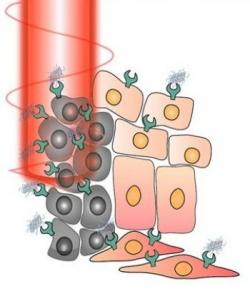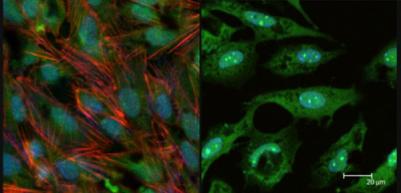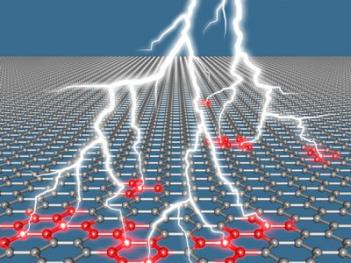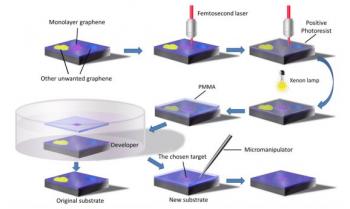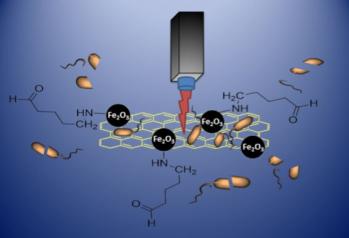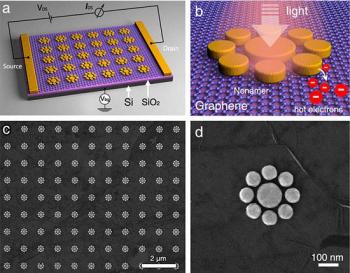Researchers develop a new way to create graphene nanoribbons arrays
Researchers from the University of Utah developed a new way to develop large arrays of graphene nanoribbons (GNRs), aiming for applications in photodetectors. Their method can directly write a large array of 15nm GNRs on a multilayer epitaxial graphene sheet using Focused Ion Beam (FIB).
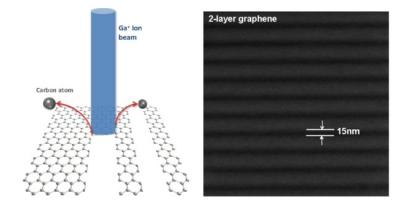
The researchers accelerated ga+ ions to 30 keV in vacuum using a FEI Helios NanoLab 650 dual-beam FIB machine. This removed carbon atoms from the graphene sheet with a 1.3 sputtering yield (carbon/Ga+ ratio). This technology can be easily transferred to pattern other graphene nanostructures such as spheres, rings and blocks.
